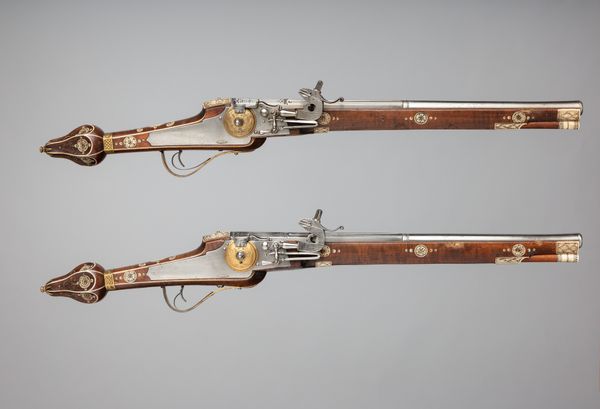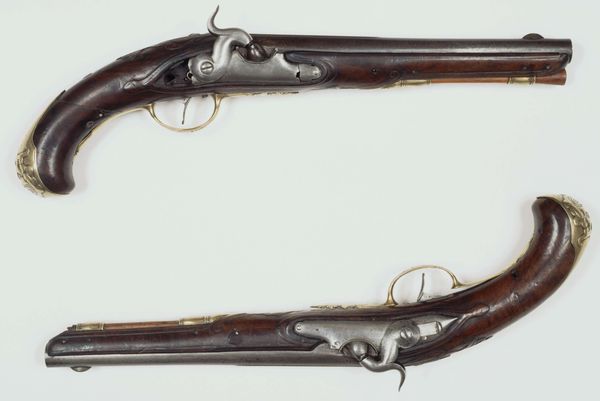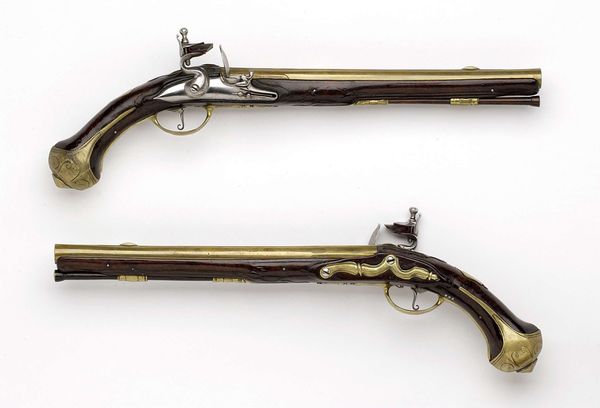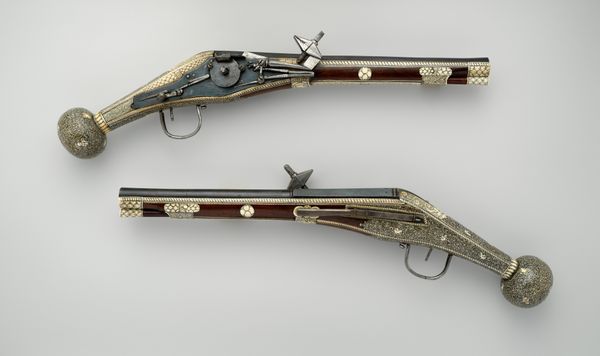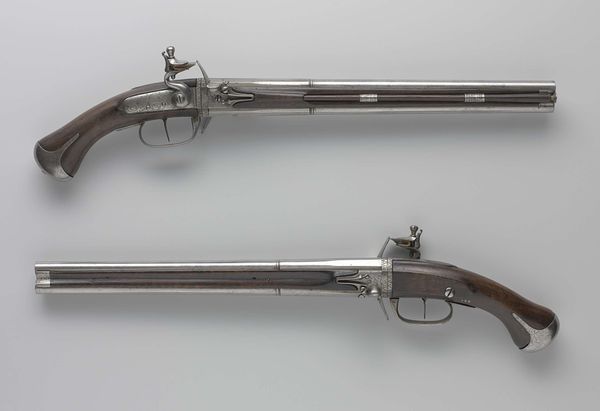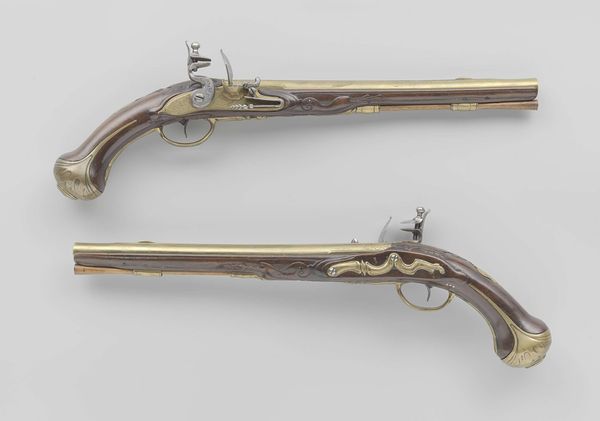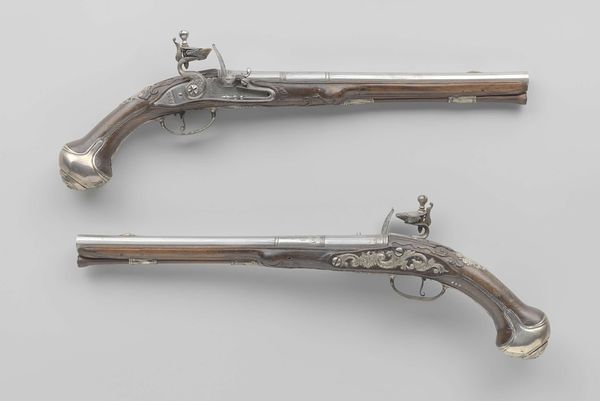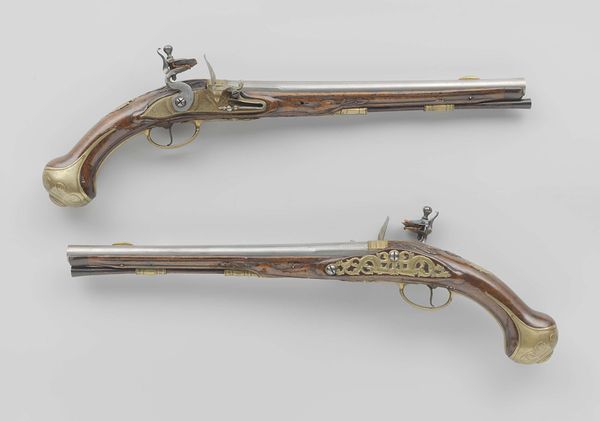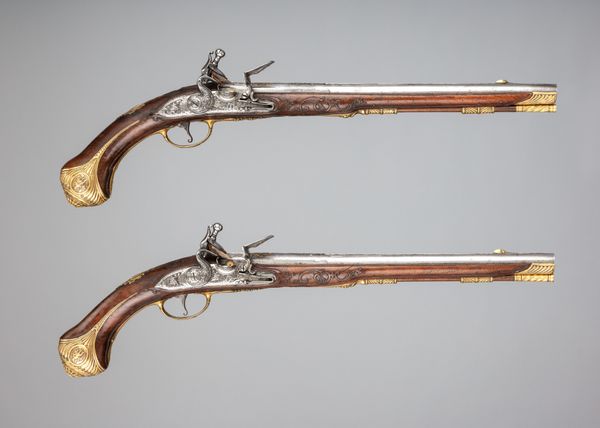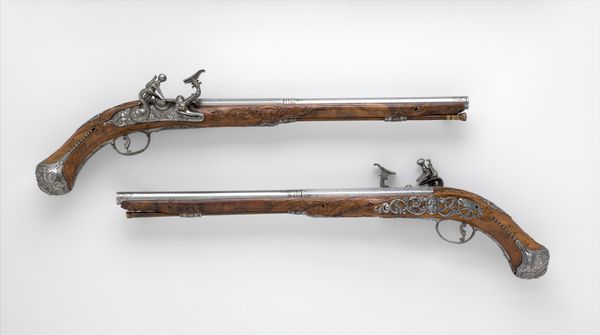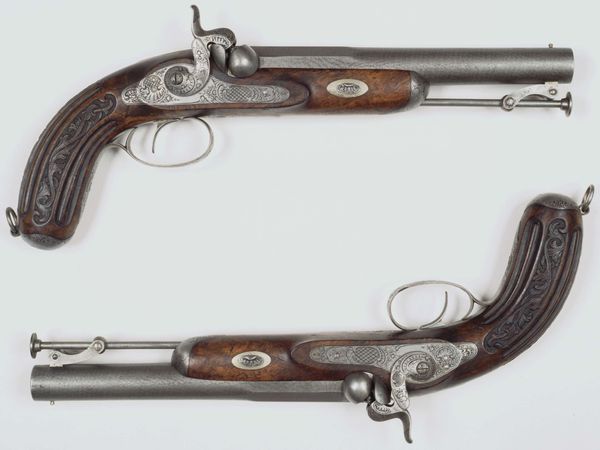
carving, metal, ivory
#
carving
#
germany
#
baroque
#
metal
#
decorative-art
#
ivory
Dimensions: L. of each 19 3/8 in. (49.2 cm); L. of each barrel 12 3/16 in. (30.9 cm); Cal. of each barrel .52 in. (13.2 mm); Wt. of each 2 lb. 3 oz. (992 g)
Copyright: Public Domain
Curator: These flintlock pistols, crafted between 1650 and 1710, are attributed to Leonardus Graeff. They're an exquisite example of Baroque craftsmanship, blending deadly function with elaborate design. Editor: They strike me as both beautiful and unsettling. The ivory gleams, and the delicate carvings contrast so starkly with their lethal purpose. There’s almost a morbid elegance about them. Curator: The materials are striking, aren't they? The use of ivory, metal, and detailed carving points to the status these pistols would have conferred. They transcend mere weaponry, becoming symbols of power. Editor: Absolutely, the imagery conveys more than just status; look at the carved heads at the butt of each pistol. Faces in ivory possess a unique, almost ghostly presence. One wonders what the significance of immortalizing these visages was to the owner, or even the craftsman, Leonardus Graeff. Curator: That gets at the fascinating public role that even functional objects could play. Displaying weapons like this suggested control and dominance. These weren't merely for self-defense, they were fashion statements used to solidify one’s social position. Their intended function wasn't simply as tools of violence, but as part of a staged performance. Editor: So true. The symbolic charge is undeniable. They are simultaneously symbols of violence and sophistication, brutality and beauty, death and legacy. Perhaps it’s that contrast, that tension, which holds so much power even today. Curator: Yes, the artist is creating a complex statement. They remind us that the way objects were created, displayed and regarded throughout the 17th century and later often carried significant implications in public life. Editor: They really force one to consider the psychology behind possessing such beautifully crafted instruments of death. Curator: Looking closer, it becomes clear how skillfully the craftsmanship reflects power relationships of that era. Editor: Indeed, a reminder that appearances, especially of symbols of power, were as carefully constructed as the objects themselves. Curator: They represent that moment in history so effectively. Editor: I agree; they reveal a world of complex and compelling visual culture.
Comments
No comments
Be the first to comment and join the conversation on the ultimate creative platform.

